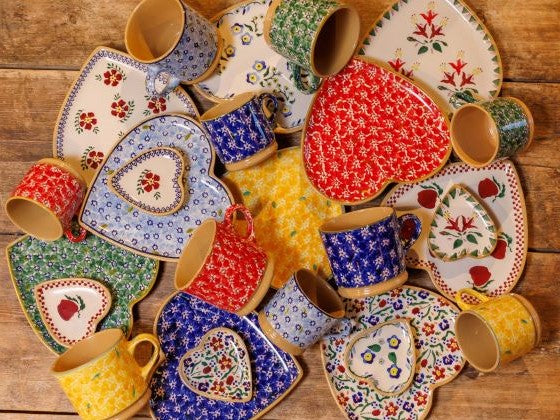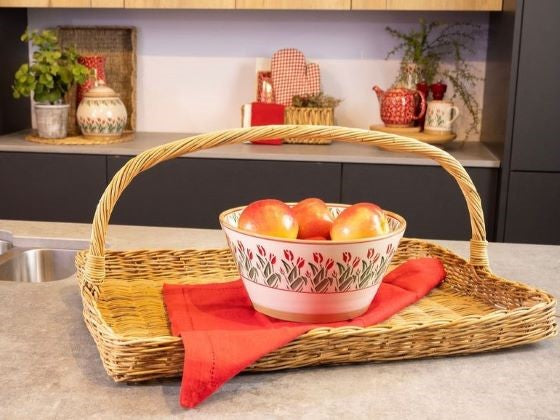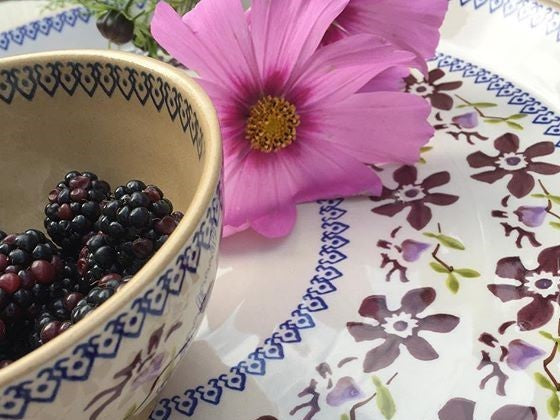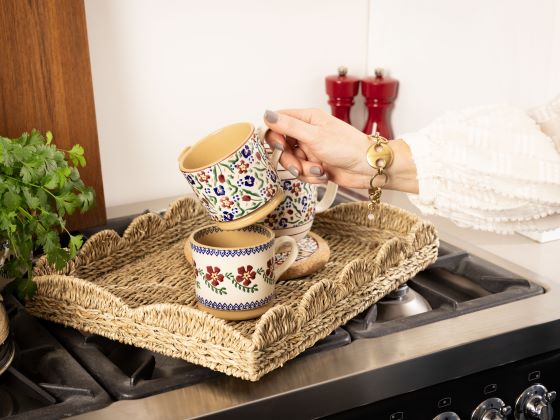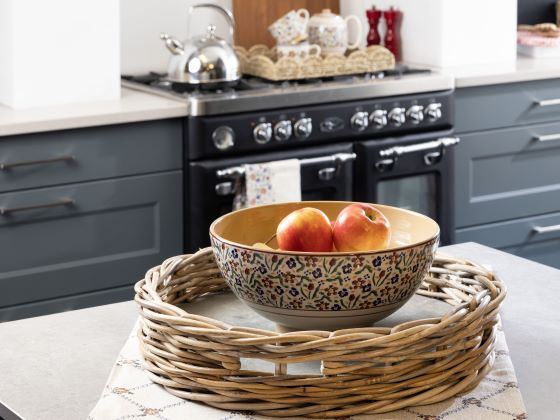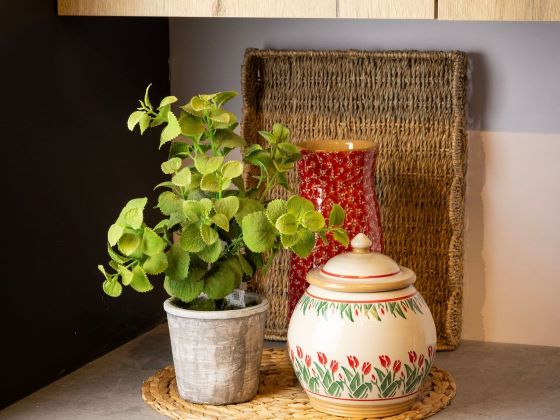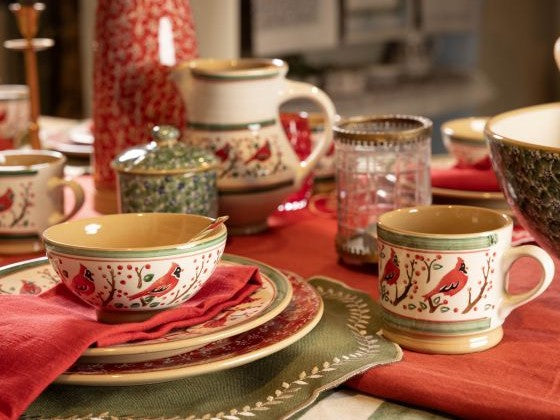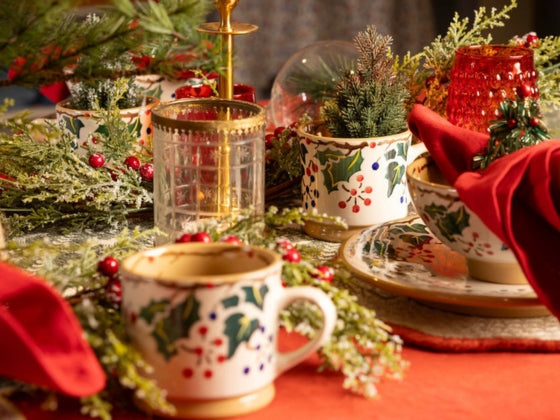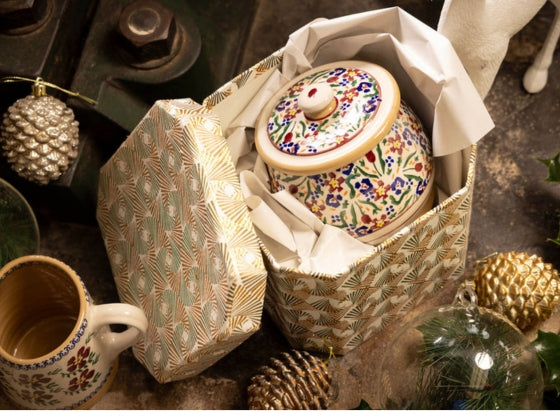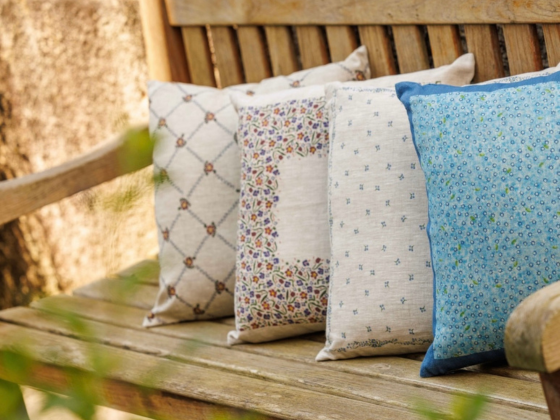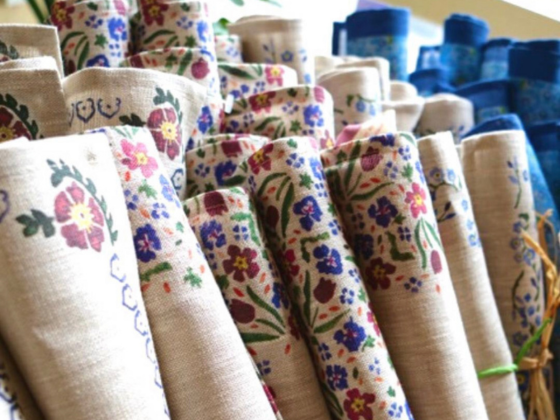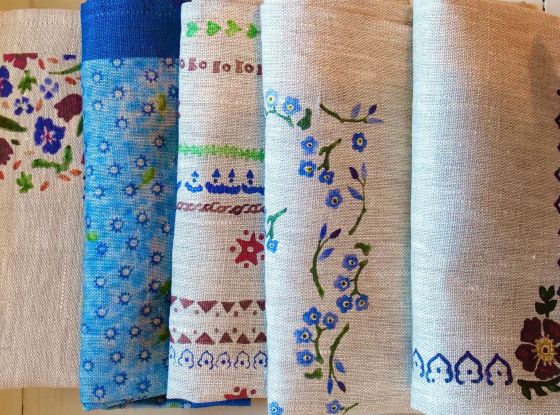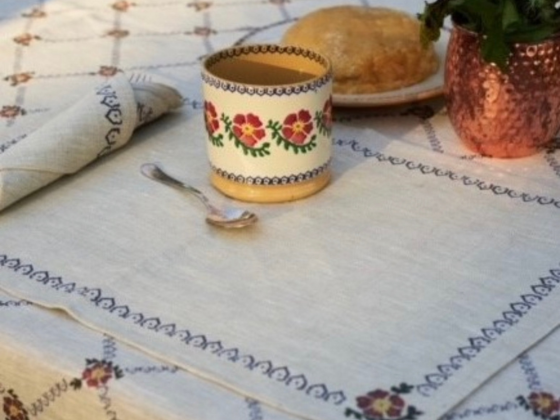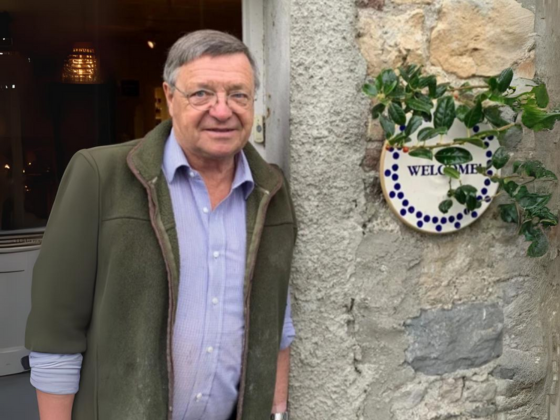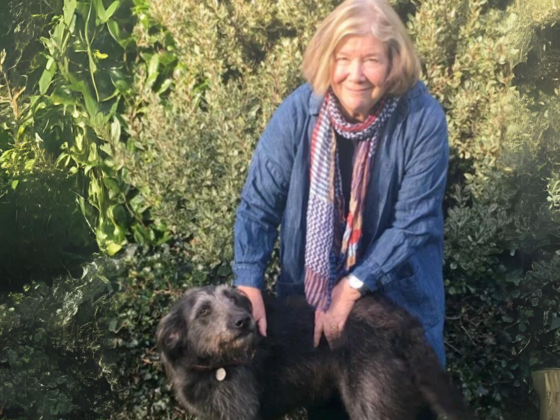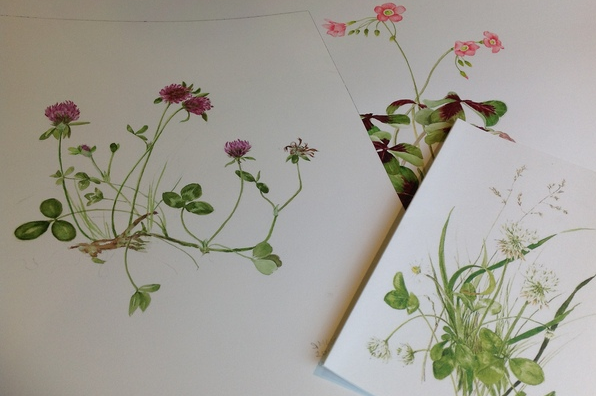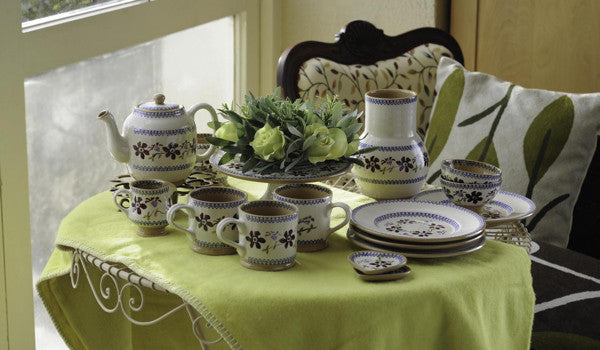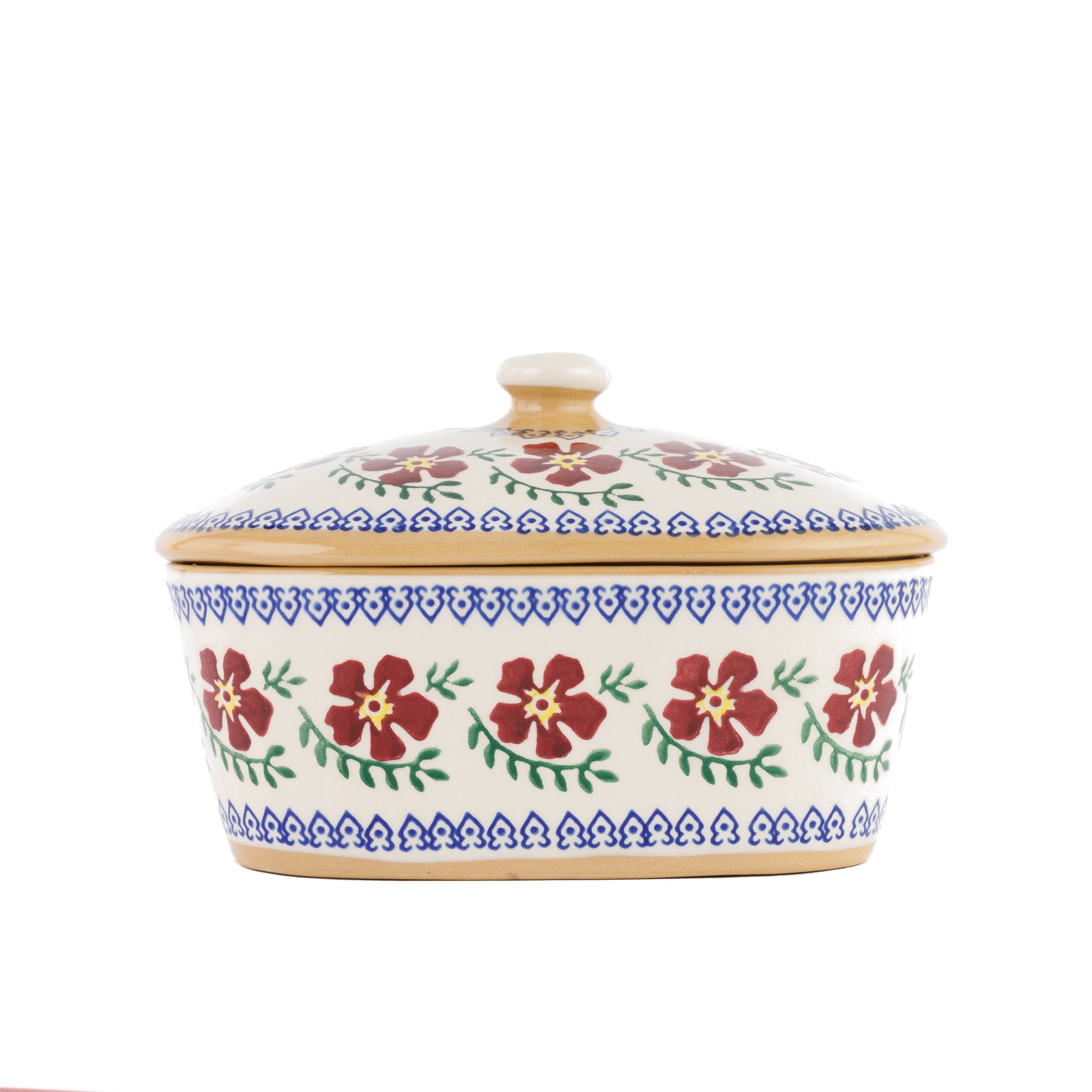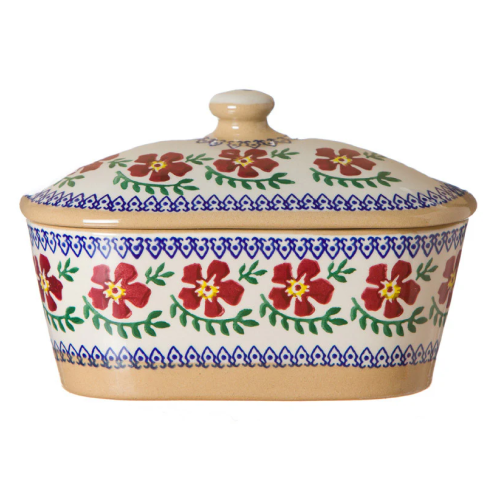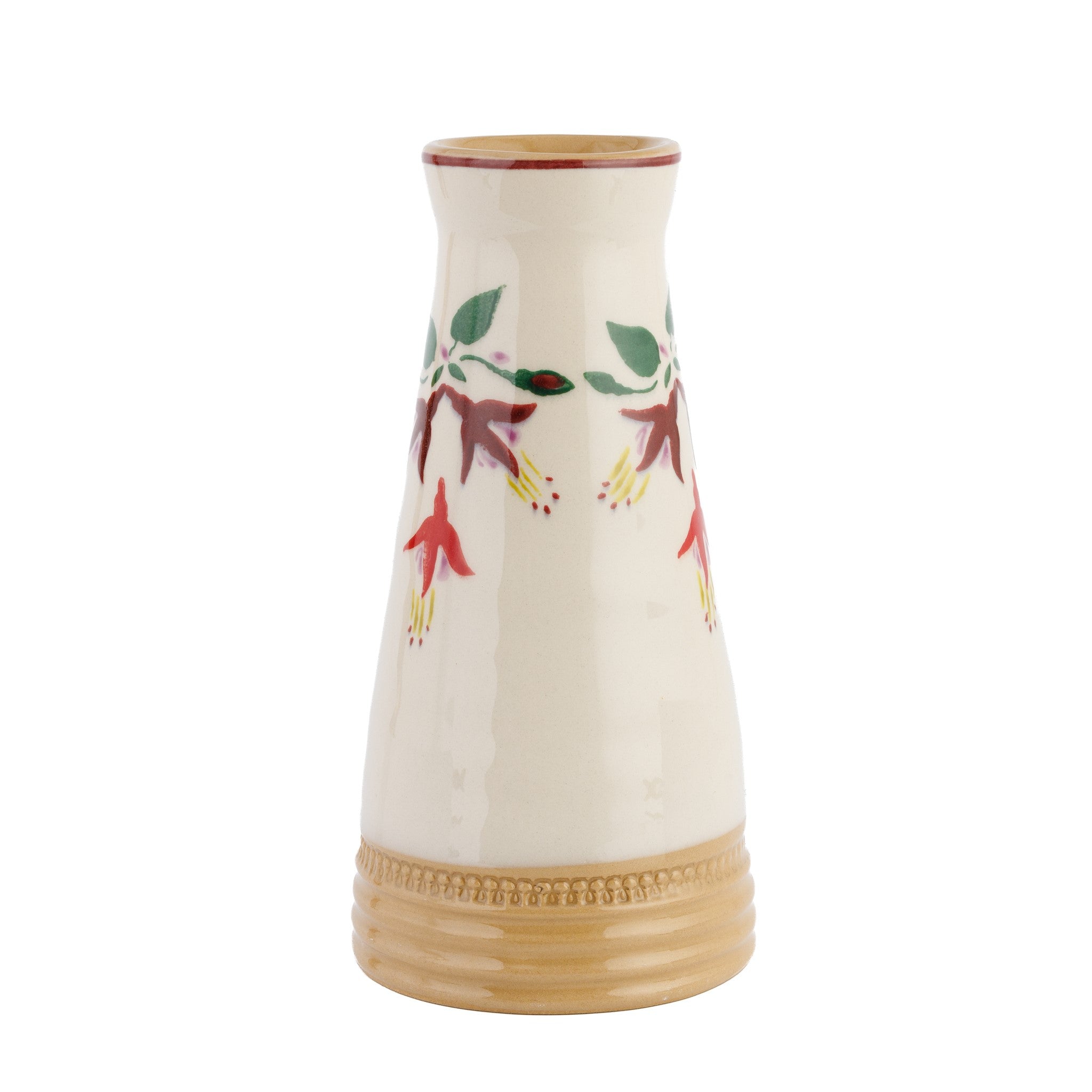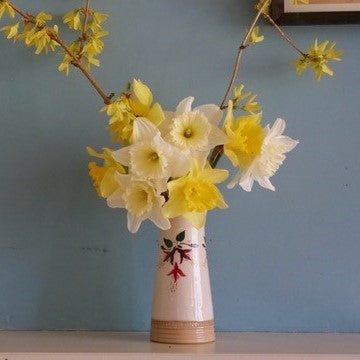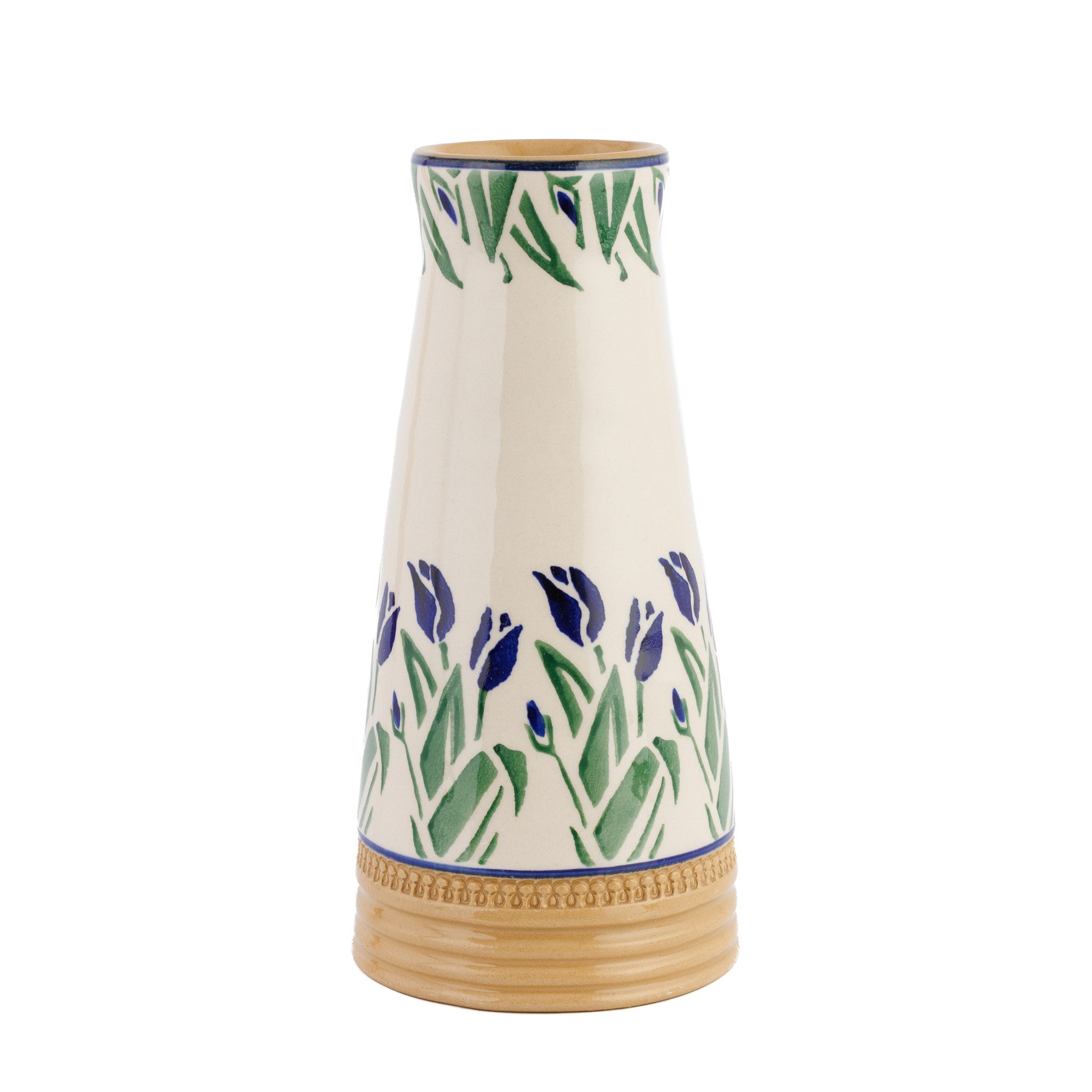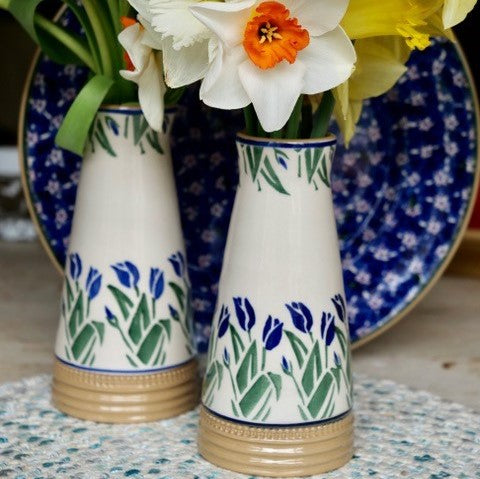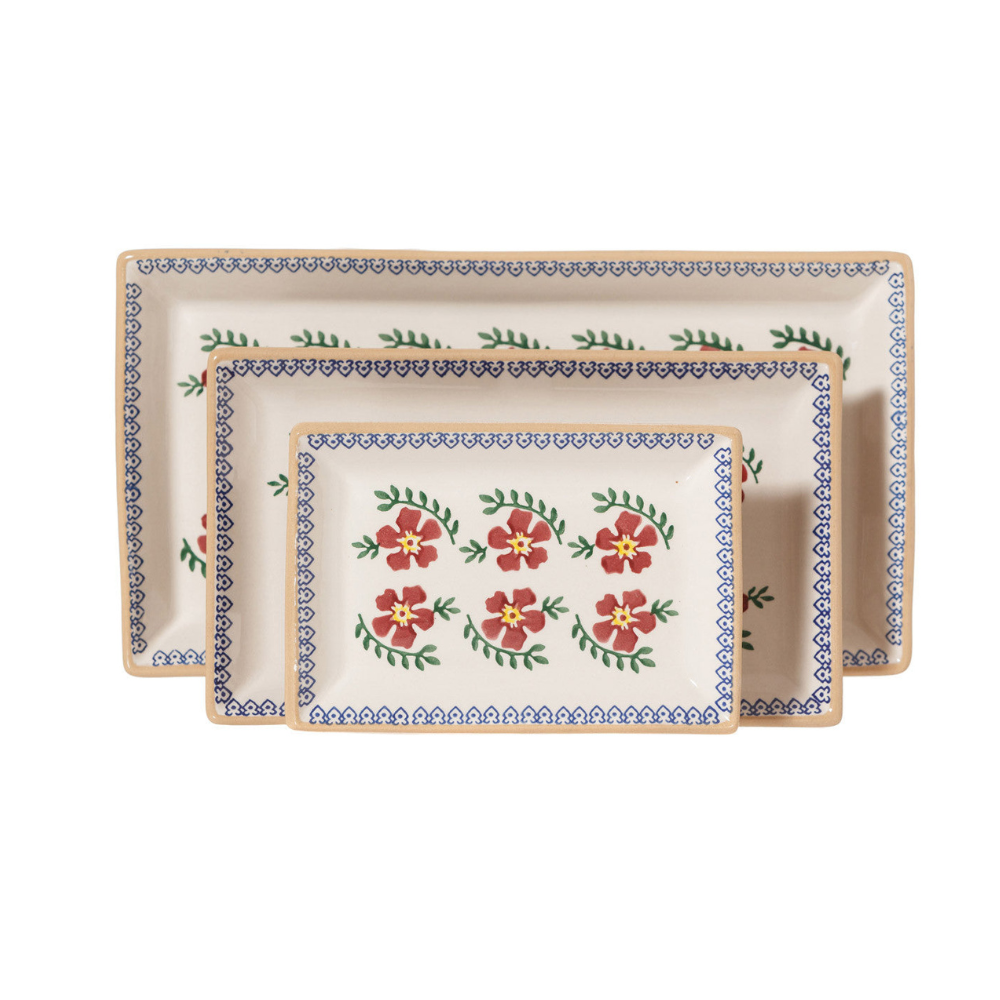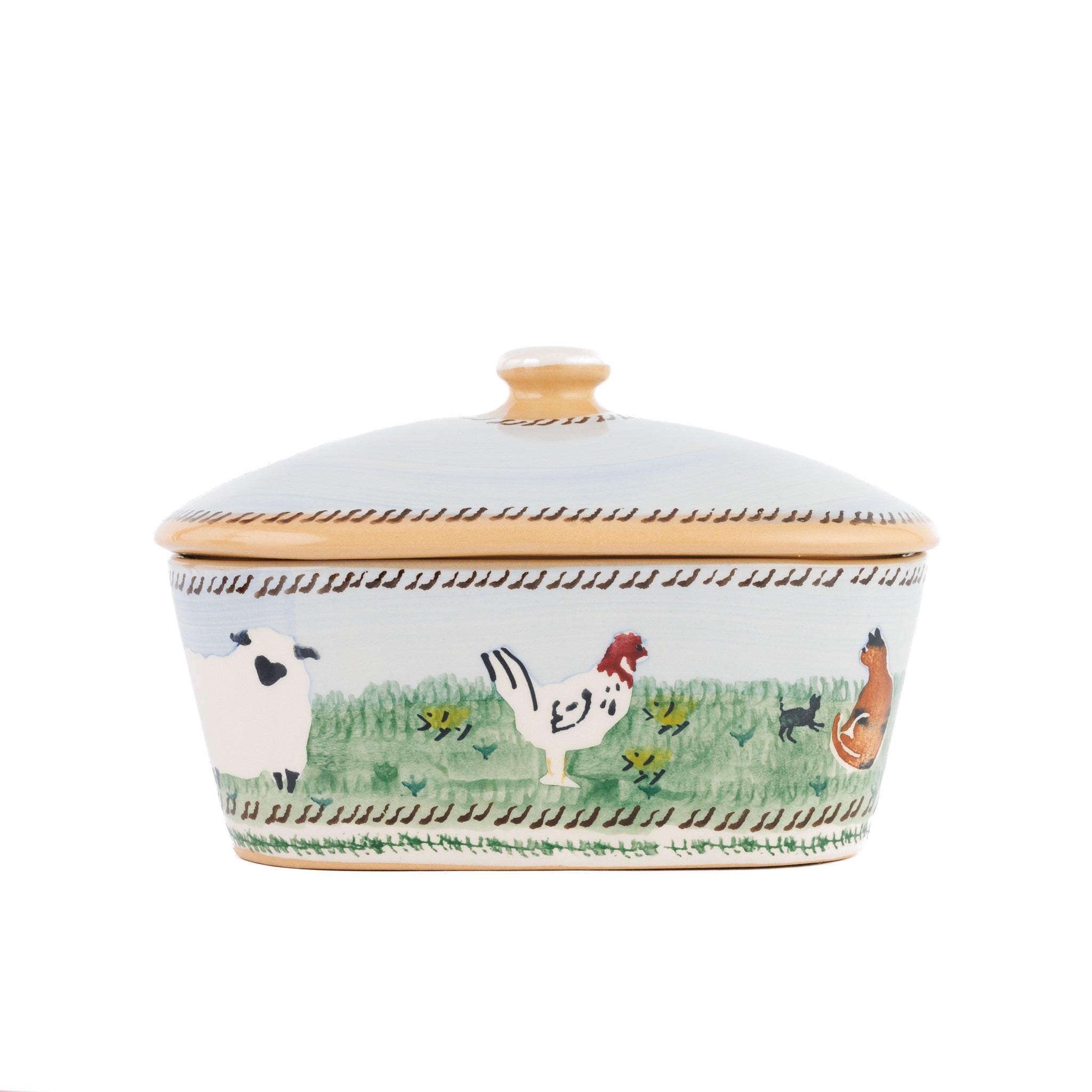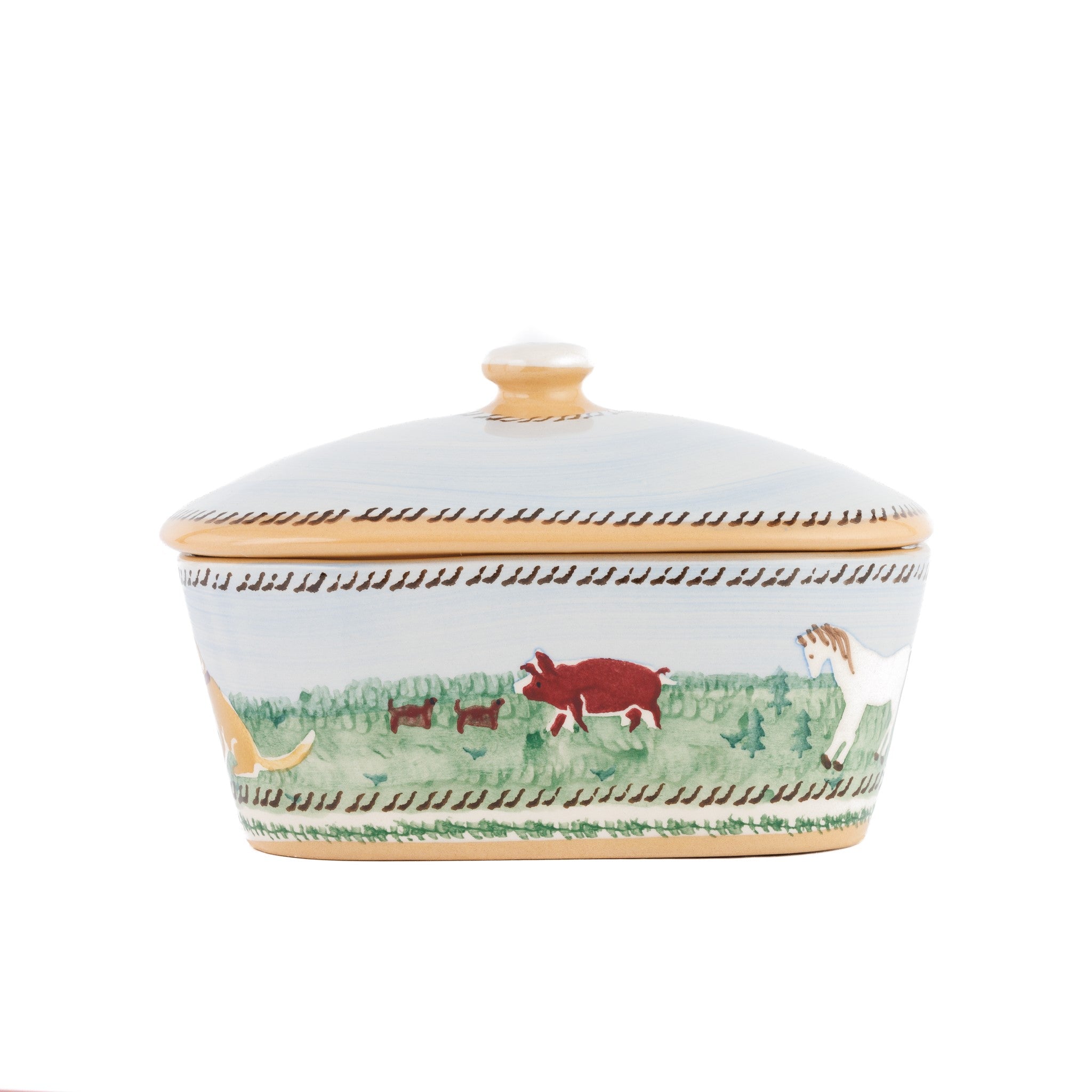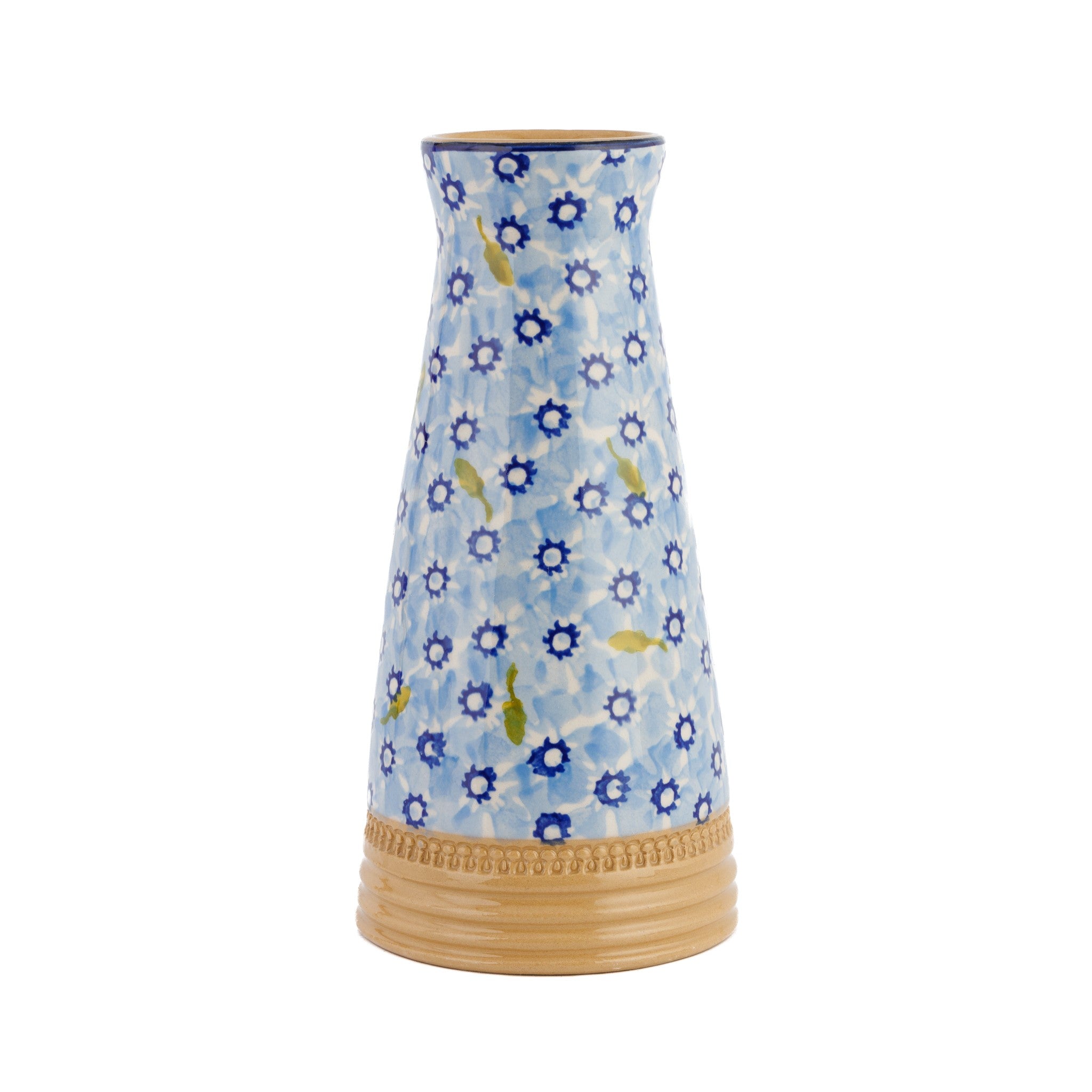Susan Mosse tells how she came up with the newest introduction to our range – the Clover pattern.
I’m occasionally asked how we come up with our new patterns here at Nicholas Mosse, so I thought it might be fun to take you through the various stages of design. Sometimes an idea and pattern will emerge almost fully formed, in minutes (!), but far more often is takes weeks, months, and occasionally a year or two to get a pattern ‘right’.
I almost always start off with a serious study of a subject; in this case, the clover found throughout Ireland was my initial heart throb. It is, when looked at VERY closely, an intriguing plant, with a curving, glorious pattern of growth. Next time you’re in a meadow, get down on your hands and knees and have a good look! As I sit at a desk with my watercolours and tiny brushes, the act of painting forces me to get very up close and personal, and the attached picture shows some of the work I’ve done on clover in the last couple of years.
After this serious stuff, I throw it all away and think about the ‘rhythm’ in the motif. I sketch freely and almost crazily until a line or set of shapes appeals to me. Then I stop and concentrate, asking myself why I like what I’ve done and how it would apply to ceramics. I do have to remember what the application will be: plates, mugs, etc. It’s not to hang on a wall (necessarily!).
So, with this bunch of initial shapes, I draw and condense and redraw and then redraw, each time altering the work. Then, I trace and trace and place onto pieces of raw pottery. All this is, I hasten to add, done BY HAND (no CAD for this stage, ever). When I am pleased with the potential, I make the little sponge elements and play. The more play the better!
Colour is the next problem to solve and that’s where it can all go terribly wrong and take ages to correct. With our new Clover pattern, I began with mauve pink and light green and it didn’t work at all. After many trials with all sorts of blues, teals etc., I ended up with a clear medium blue and I ditched my original clover flower, switching over to a design I did for an Aster pattern, which never went into production. Some of our Facebook followers guessed that I had used an aster, and hats off to them for their perception. But the basic notion of trying to put an Irish meadow onto dinnerware seems to have succeeded and the pattern has been widely approved. Two or three years after startoff!

